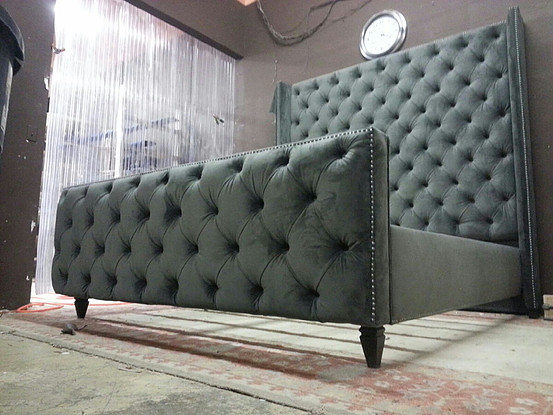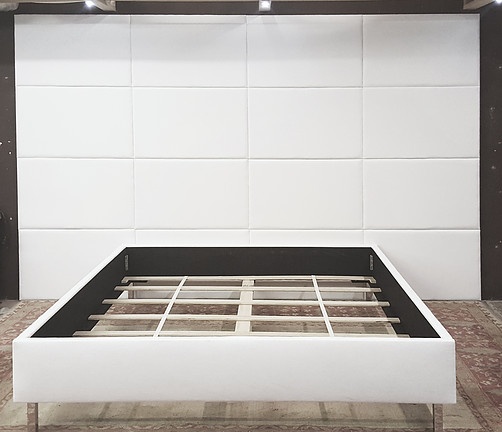The title sounds scandalous, but that’s as salacious as this article will go. Today I will write about exciting upholstery headboards, footboards, bed surrounds and wall panelsfor the sumptuous master bedroom. For many years we have been providing architects and designers a resource for plush custom upholstery. While I have written on many topics, I have never focused on great upholstery for the bedroom.
When designing a custom, fully upholstered bed there are many options.
Do you want the bed tufted?
Tufting refers to the technique of threading through layers of fabric, often in a pattern and securing the ends of the thread with a button. The dense cluster that this technique creates is known as “tufts”. 
What components do you want?
There are a few components when designing a custom upholstered bed ensemble. The options include the following layouts:
- Headboard
Many times just an upholstered headboard with custom bedding is sufficient. Here the bed would consist of a mattress and boxspring sitting on a metal frame. - Surround
The surround is used to add some more upholstery to the set. The surround would replace the boxspring and metal frame. - Footboard
The upholstered footboard is a shrunken, double sided version of the headboard. The footboard requires the addition of the surround as well.
Fabrics
Selecting a suitable fabric for the upholstery is important. If you were planning for tufts, you would want a fabric with a suitable hand that would pleat nicely in the tufting. You should also consider selecting a fabric that is durable fabric, will resist pilling and is resistant to staining. If you are specifying tufts and you are selecting a fabric with a bold pattern, you need to make sure that the pattern will look ok once it’s buried in the tufting. Sometimes there can be unforeseen consequences if not thought out.
Wall Panels
The addition of upholstered wall panels behind an upholstered bed is a great way to treat this feature wall. Wall panels can be fabricated in many dimensions, including widths, heights, depths and tufts. Also a wide range of fabrics can be used. If there is a dual purpose of both decorative and sound absorption, special substrates can be used along with acoustically transparent fabrics to reduce the sound.

{{cta(‘7417313c-569d-40db-b895-cda90640f679′,’justifycenter’)}}

